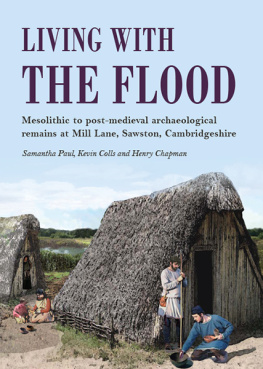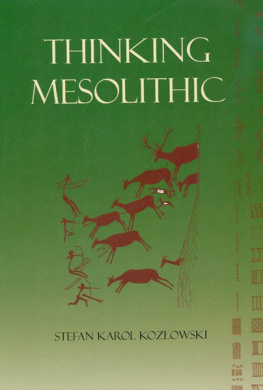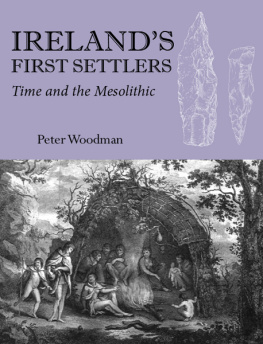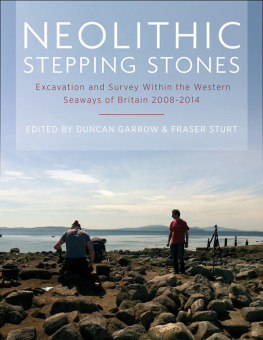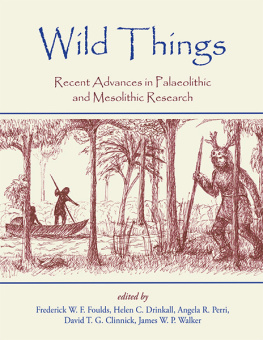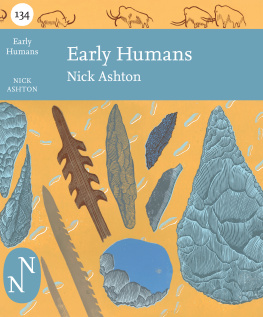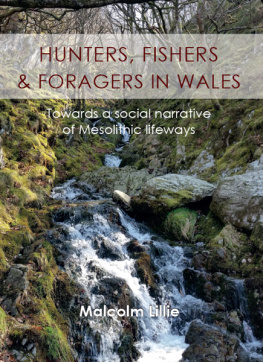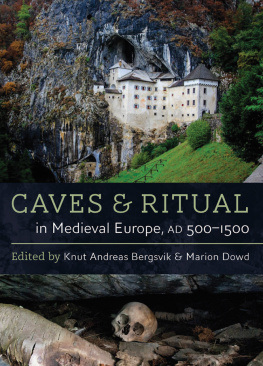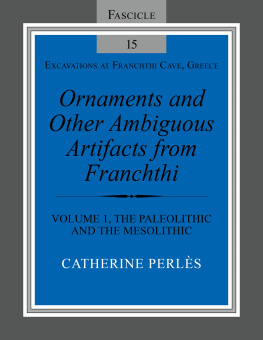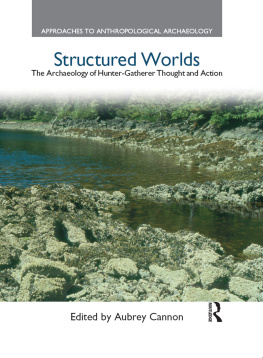Navigation

The Mesolithic in Britain
The Mesolithic in Britain proposes a new division of the Mesolithic period into four parts, each with its own distinct character.
The Mesolithic has previously been seen as timeless, where little changed over thousands of years. This new synthesis draws on advances in scientific dating to understand the Mesolithic inhabitation of Britain as a historical process. The period was, in fact, a time of profound change: houses, monuments, middens, long-term use of sites and regions, manipulation of the environment and the symbolic deposition of human and animal remains all emerged as significant practices in Britain for the first time. The book describes the lives of the first pioneers in the Early Mesolithic; the emergence of new modes of inhabitation in the Middle Mesolithic; the regionally diverse settlement of the Late Mesolithic; and the radical changes of the final millennium of the period. The first synthesis of Mesolithic Britain since 1932, it takes both a chronological and a regional approach.
This book will serve as an essential text for anyone studying the period: undergraduate and graduate students, specialists in the field and community archaeology groups.
Chantal Conneller is a Senior Lecturer in early prehistory at Newcastle University. She is author of An Archaeology of Materials (2012) and Star Carr: A Persistent Place in a Changing World (2018).
Routledge Archaeology of Northern Europe
The British Palaeolithic
Human Societies at the Edge of the Pleistocene World
Paul Pettitt and Mark White
The Neolithic of Britain and Ireland
Vicki Cummings
Iron Age Lives
The Archaeology of Britain and Ireland 800 BC AD 400
Ian Armit
The Mesolithic in Britain
Landscape and Society in Times of Change
Chantal Conneller
Formative Britain
The Archaeology of Britain AD 400 1100
Martin Carver
For more information about this series, please visit: https://www.routledge.com/Routledge-Archaeology-of-Northern-Europe/book-series/ARCHNEUR
The Mesolithic in Britain Landscape and Society in Times of Change
Chantal Conneller

First published 2022
by Routledge
4 Park Square, Milton Park, Abingdon, Oxon OX14 4RN
and by Routledge
605 Third Avenue, New York, NY 10158
Routledge is an imprint of the Taylor & Francis Group, an informa business
2022 Chantal Conneller
The right of Chantal Conneller to be identified as author of this work has been asserted in accordance with sections 77 and 78 of the Copyright, Designs and Patents Act 1988.
All rights reserved. No part of this book may be reprinted or reproduced or utilised in any form or by any electronic, mechanical, or other means, now known or hereafter invented, including photocopying and recording, or in any information storage or retrieval system, without permission in writing from the publishers.
Trademark notice: Product or corporate names may be trademarks or registered trademarks, and are used only for identification and explanation without intent to infringe.
British Library Cataloguing-in-Publication Data
A catalogue record for this book is available from the British Library
Library of Congress Cataloging-in-Publication Data
A catalog record has been requested for this book
ISBN: 978-1-138-79042-1 (hbk)
ISBN: 978-1-138-79043-8 (pbk)
ISBN: 978-1-003-22810-3 (ebk)
DOI: 10.4324/9781003228103
Typeset in Times New Roman
by MPS Limited, Dehradun
Contents
Figures
Tables
Acknowledgements
First, I would like to thank the British Academy, whose award of a mid-career fellowship permitted me to finish this book within the terms of my natural lifespan. Thanks also to the intrepid readers who commented on the entire draft: Andrew David, Graeme Warren and Caroline Wickham-Jones. Ben Elliott, Aimee Little and Tom Yarrow provided useful input on specific chapters and issues. The project has hugely benefited over its various iterations from the input of Tom Higham, Alex Bayliss and Seren Griffiths on the dating side. I would also like to thank Fraser Sturt for generously generating new sea-level maps for this book; to Charlie Rowley for her rigorous work on the maps in maps.
A book that covers so much material can only be completed through the generous efforts of a huge number of people, who have provided images, answered queries and introduced me to their sites. I would like to thank: Cathy Barnett, Nick Barton, Alex Bayliss, Martin Bell, Martin Blundell, Fraser Brown, Alison Burns, Sophy Charlton, Mike Church, Andrew David, Mike Donnelly, Ben Elliott, Mike Farley, Nyree Finlay, Eric Grant and colleagues, Seren Griffths, Susanna Harris, Gill Hey, Brian Howcroft, Clive Hudson, David Jacques, Kay Kays, Jodie Lewis, Tom Lord, Nicky Milner, Steve Mithen, Garry Momber, Graham Mullan, Nick Overton, Susann Palmer, Steph Piper, Stephen Poole, Matt Pope, Paul Preston, Gary Robinson, Peter Rowley-Conwy, Rick Schulting, George Smith, Penny Spikins, Barry Taylor, John Thorp, Clive Waddington, Elizabeth Walker, Graeme Warren, Caroline Wickham Jones, Karen Wicks, Linda Wilson. A special thanks goes to Roy Froom for his generous tour of the Kennet Valley sites, to John Davies for his introduction to the Mesolithic of Northumberland and to the late Pat Stonehouse for his appreciation of the Pennine Mesolithic landscape. I have learnt a huge amount about the British Mesolithic from PhD students I have worked with and would like to thank Hannah Cobb, Amy Gray Jones, Jim Leary, Nick Overton, Ray Nilson, Ellen McInnes, Lawrence Billington, Alison Burns, Julie Birchenall and Tom Lawrence for their insights. This book has also benefitted from discussions over many years with Ed Blinkhorn, Ben Elliott, Roger Jacobi, Aimee Little, Stephen Poole, Graeme Warren and Tom Yarrow. All errors are of course my own.
A lot of this book is based on work on lithic collections and museum archives. In times when local museums are under threat from reduced funding, I must emphasise how vital these visits have been. I would like to thank the following people who have generously facilitated access to their collections: Jill Greenaway (Reading Museum), Brett Thorn (Buckinghamshire County Museum), Andrew Parkin (Great North Museum), Ross Turle and David Allen (Hampshire Museums), Lisa Brown (Wiltshire Museum), Ann Vernau (Three Rivers Museum Trust), Richard Sabin (Natural History Museum) and Nick Ashton, Jill Cook Claire Harris and Claire Lucas (British Museum).
Thanks also to Kangan Gupta and all the other members of the Routledge editorial team, whose patience I have tested over the years.
And finally to Aime Little, Lesley McFadyen and Beccy Scott, and to Roger Jacobi, who set me on to this task.
Basemap data acknowledgements:
The maps produced for this volume contain public sector information (OS Strategi 2016.01 and OpenRivers 2018) licensed under the Open Government Licence v3.0 and open data (Pope 2017 UK Shaded Relief Tiff) licensed under the Open Data Commons Public Domain Dedication and License (PDDL) v1.0.
Note on radiocarbon dating:
All radiocarbon dates have been calibrated using IntCal13 (Reimer et al. 2013) and OxCal version 4.3 (Bronk Ramsey 2009). Date ranges are given at 95% probability unless noted otherwise.


